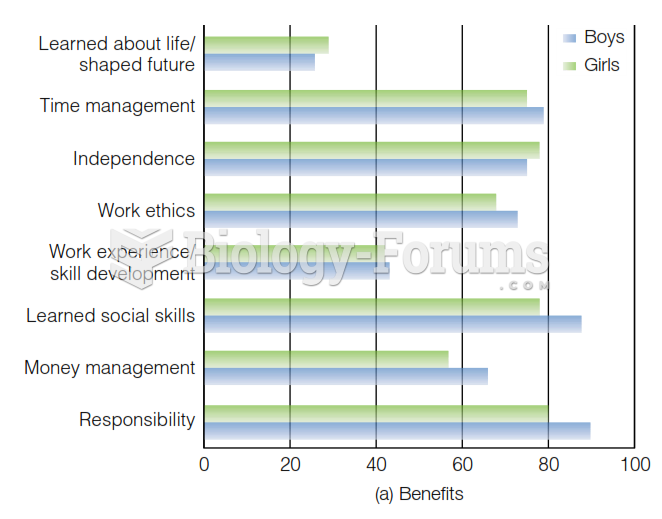Answer to Question 1
The Personal Responsibility and Work Opportunity Reconciliation Act abolished the Aid to Families of Dependent Children (AFDC) program and replaced it with the Temporary Assistance to Needy Families (TANF) program. No longer is cash assistance to the poor an entitlement. It is now short term and varies from state to state. Numerous studies have been conducted, and are continuing to be conducted, on the effects of TANF program. Supporters of the program cite the following benefits:
Employment of young single mothers (ages 18-24 ) has nearly doubled.
Employment of never-married mothers has increased.
The number of Americans on cash assistance (the AFDC program compared to TANF) has plummeted.
Teenage birthrates have fallen since 1996. One motivation for the passage of the 1966 Welfare Reform Act was the desire to change policies that conservatives claim reward early childbearing by single mothers.
Almost all mothers (and fathers) who are working state they prefer work to welfare. Having a job may be more psychologically beneficial to the parents and to their children than being on a stigmatized welfare program.
Critics of the TANF program site the following shortcomings:
Most mothers who leave the welfare rolls find jobs, but a large minority do not. Moreover, some of those who find jobs soon lose them and do not reappear on the welfare rolls.
Some former welfare recipients are making successful transitions to work, often after many years of welfare dependency. Yet even the more successful job holders experience economic hardship and often must ask for help from family and friends.
The long-term impact of welfare reform on both single mothers and their children could well turn out to be like the long-term impact of deinstitutionalizat ion on the mentally ill; good for some but terrible for others.
Many working mothers report problems finding satisfactory child care.
The people who have been kicked off the welfare rolls are pushing down wages for low-skilled workers in the United States. The welfare overhaul has depressed the median wage of all women workers. Increased competition for jobs makes it easier for employers to pay less, and harder for unions to negotiate good contracts.
The group that has benefited most by welfare reform is employers-as this group now has a much larger pool of applicants for low-income jobs.
States now have much more choice in determining whom they will assist, what requirements they will impose upon those who receive aid, and what noncash supports those families will receive. As a result, there is much more disparity between states than existed under AFDC.
Most of those who receive TANF do not make it above the poverty line, as TANF benefits are often below the poverty line. In addition, many of those who obtain a job often remain in poverty because the jobs are often minimum-wage (or slightly above) jobs that are below the poverty line.
There is a serious danger that many TANF recipients will be trapped into long-term poverty. TANF programs provide almost no opportunities, via paid benefits, for TANF recipients to continue their education beyond high school. As a result, TANF recipients are likely to obtain minimum-wage jobs and other dead-end work (work involving poor pay, scant fringe benefits, and little opportunity for advancement).
Answer to Question 2
In 1996 President Clinton and the Democrats and Republicans in Congress compromised on welfare reform and passed the Personal Responsibility and Work Opportunity Reconciliation Act. Key provisions of this act are:
The federal guarantee of cash assistance for poor families with children is ended. Each state now receives a capped block grant (lump sum) to run its own welfare and work programs.
The head of every family has to work within 2 years, or the family loses its benefits. After receiving welfare for 2 months, adults have to perform community service unless they have found regular jobs. (States can choose not to have a community service requirement.)
Lifetime public welfare assistance is limited to 5 years. Hardship exemptions from this requirement are available for up to 20 of recipients in a state.
Communities must provide child care to TANF participants.
States can provide payments to unmarried teenage parents only if a mother under 18 is living at home or in another adult-supervised setting and attends high school or an alternative educational or training program as soon as the child is 12 weeks old.
States are required to maintain their own spending on public welfare at 75 of their 1994 level or 80 if they failed to put enough public welfare recipients to work.
States cannot penalize a woman on public welfare who does not work because she cannot find day care for a child under 6 years old.
States may deny Medicaid to adults who lose welfare benefits because of a failure to meet work requirements.
A woman on public welfare who refuses to cooperate in identifying the father of her child must lose at least 25 of her benefits.
Future legal immigrants who have not yet become citizens are ineligible for most federal welfare benefits and social services during their first 5 years in the United States. Supplemental Security Income benefits and food stamp eligibility ended for noncitizens, including legal immigrants, receiving benefits in 1996.







